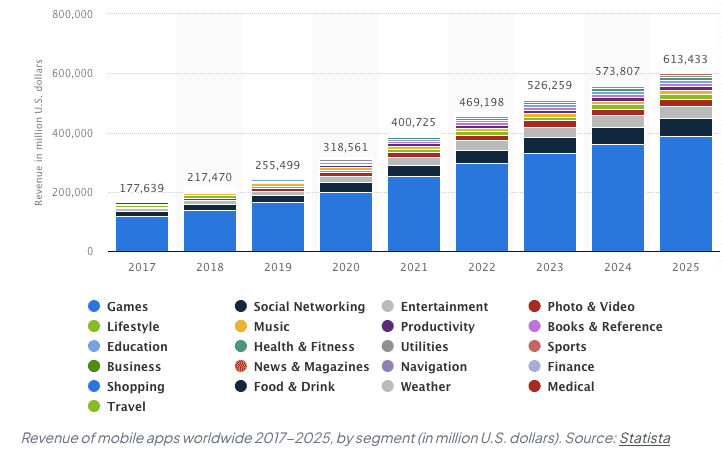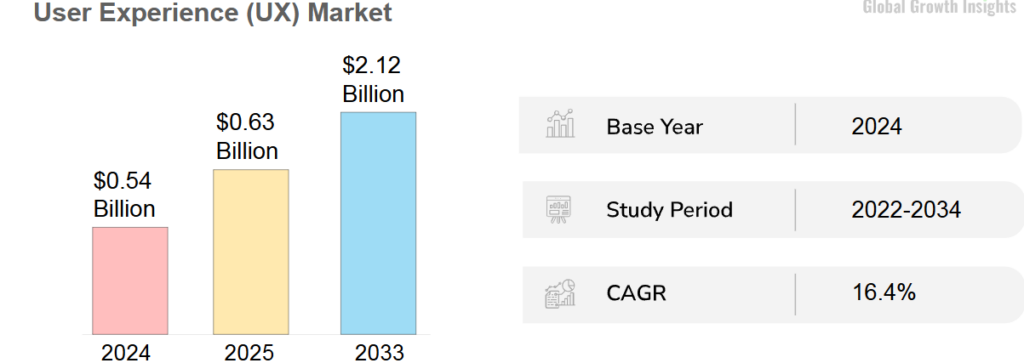Android App Development Cost in 2025: Budget Breakdown & Smart Savings
Android app development cost has become a key concern for enterprises investing in digital transformation. With growing demand for mobile solutions driven by emerging software development trends, businesses must carefully evaluate expenses to balance innovation with financial sustainability. Factors like app complexity, design, developer location, and compliance shape total cost. Beyond initial pricing, hidden elements such as maintenance and updates impact budgets significantly.
This article explores real pricing ranges, hidden costs, and budget optimization strategies, helping enterprises plan wisely and maximize value from their development investments. Understanding the broader landscape of software development cost enables businesses to make informed decisions about their mobile app projects.
1. Why Android App Development Cost Planning Matters for Enterprises
Enterprises face increasing competition and rapid digital change. Careful planning of Android app development cost helps businesses optimize resources, avoid risks, and achieve long-term growth. The following subsections explore why financial planning is vital for success.
A. Aligning Budget with Business Goals
Enterprises invest in mobile solutions to improve customer engagement, internal efficiency, or revenue generation. Without proper planning, budgets may be misaligned with strategic goals. Managing Android app development cost ensures that every dollar spent supports enterprise objectives.
Statista report highlighted that global mobile app revenue is expected to increase across most segments and reach a total of around $613 billion, with Android holding the majority market share. This scale emphasizes why enterprises must carefully allocate budgets to maximize ROI.
B. Preventing Unexpected Expenses
Unexpected costs often disrupt enterprise projects. Businesses underestimate hidden elements like testing, infrastructure, or compliance. Without cost planning, Android app development cost may exceed projections significantly.
By identifying hidden expenses early, enterprises can safeguard budgets, maintain project timelines, and reduce operational stress. Cost planning becomes a proactive shield against disruptions, helping projects remain within approved budgets.
2. What Determines Android App Development Cost?
The total Android app development cost is shaped by several interconnected factors. Complexity, design, developer location, and integrations play critical roles. Understanding these drivers helps enterprises forecast budgets more effectively, prevent overruns, and ensure that every resource is allocated toward delivering measurable business value. Accurate software project estimation becomes crucial at this stage, as it provides the foundation for realistic budgeting and timeline planning.
A. Complexity and Features Effect Android App Development Cost
The complexity of an application is the most important cost driver. Simple apps with limited screens, static content, and basic functionality require fewer resources and less development time. In contrast, advanced apps with interactive dashboards, real-time synchronization, or payment integrations demand larger teams and extended timelines.
For enterprises, aligning desired features with business goals is essential. Overloading applications with unnecessary functions not only raises the Android app development cost but also complicates long-term maintenance.
B. UI/UX Design and User Experience Needs
User interface (UI) and user experience (UX) design directly influence both customer engagement and project budgets. Standard templates cost less but rarely deliver differentiation. Enterprises seeking modern, custom designs must invest more in creative expertise, usability testing, and prototyping.
According to a report by Global Growth Insights, 71% of enterprises reported increased user retention due to UX upgrades. While design raises costs, it significantly improves long-term business performance.
Enterprises must balance budgets and user expectations. Investing in thoughtful UI/UX increases satisfaction and supports brand reputation. When carefully planned, design investments ensure higher ROI despite their impact on overall Android app development cost.
C. Developer Location and Hourly Rates
Geographic differences in developer rates play a decisive role in cost planning. Hiring developers in North America or Western Europe often costs three to five times more than outsourcing to Asia or Eastern Europe.
According to ZipRecruiter, the average developer salary in the US reflects the competitive nature of the software developer career path, with experienced Android developers commanding premium rates that directly impact project budgets.

These variations dramatically influence final budgets. For example, a mid-complexity app requiring 1,000 development hours may cost $120,000 in the US but only $40,000 in Vietnam.
Enterprises must also weigh quality, communication, and time zone overlap when choosing partners. Outsourcing to experienced providers in regions like Vietnam delivers both high-quality engineering and cost savings. Such choices allow companies to control Android app development cost while maintaining reliable outcomes.
3. Average Pricing Ranges for Android App Development
This section highlights typical Android app development cost ranges by complexity. We’ll present data in a clear table and explain what factors justify each level of investment.
App Complexity Level Estimated Android App Development Cost
|
App Complexity Level |
Estimated Android App Development Cost |
Description |
|
Basic / Simple App |
$30,000 – $60,000 |
Standard UI, few screens, minimal backend. Suitable for MVPs, internal apps, or simple tools. |
|
Medium Complexity App |
$60,000 – $150,000 |
Includes third-party APIs, authentication, push notifications, and polished UI. Good for scalable B2C or B2B apps. |
|
Complex (Feature-Rich) |
$150,000 – $350,000+ |
Advanced features like AI, dashboards, real-time sync, and location tracking. Requires strong backend and frequent updates. |
|
Enterprise-Level App |
$250,000 – $500,000+ |
Multi-tier backend, ERP/CRM integration, high security, and compliance. Designed for industries like finance, healthcare, or logistics. |
Beyond simple categories of basic, medium, or enterprise-level apps, it is important to note that Android applications cover an extensive range of industries. From dating app development, restaurant app development to taxi app development and even betting app development, each domain carries unique requirements that directly influence the overall Android app development cost.
4. Hidden Android App Development Cost You Should Consider
Many enterprises only calculate the upfront development budget. However, several hidden factors significantly raise the Android app development cost over time. Planning for them ensures financial stability and sustainable growth.
A. Backend & Third-Party Services
Backend infrastructure and third-party services represent recurring costs that many enterprises fail to anticipate. These hidden elements significantly impact the long-term Android app development cost.
Monthly expenses include APIs, cloud services, and analytics platforms. For example, a messaging API might cost $60/month, while push notification services add another $40/month. Over 12 months, these seem small subscriptions total nearly $1,200. Larger tools like AWS or Firebase can quickly scale costs as usage increases, often reaching $500–$1,000/month for growing enterprises.
In practice, a mid-scale application can incur $3,000–$10,000 annually in backend and subscription fees, depending on traffic and features. Enterprises that budget only for initial development often underestimate the financial requirements of running an app sustainably.
A smart approach includes mapping potential subscriptions, calculating usage-based growth, and identifying scalable alternatives. Free tiers may help initially, but long-term planning ensures businesses remain financially prepared.
Factoring in backend costs gives a realistic perspective of the true Android app development cost, not just the upfront build. Enterprises that account for these predictable yet overlooked fees avoid post-launch shocks and ensure financial control.
B. Google Play Submission, Marketing & User Acquisition
Publishing an app requires more than paying a small registration fee. Ongoing charges for app store commissions and user acquisition heavily influence the Android app development cost.
Google Play charges a one-time $25 registration fee, but the real expense comes from commissions. Google retains 15–30% of in-app purchase or subscription revenue. For example, from a $9.99 purchase, enterprises receive only $6.99–$8.49. Over thousands of transactions, this deduction is significant.
Marketing and user acquisition represent even larger hidden costs. With millions of apps competing for visibility, enterprises often pay $2–$5 per install in advertising spend. Acquiring 10,000 users may cost between $20,000 and $50,000 and PR campaigns. For larger goals, paid acquisition budgets can exceed $100,000 annually.
Enterprises that fail to account for these realities risk slow adoption and limited ROI despite well-built apps. Successful businesses allocate marketing budgets alongside development, treating promotion as a recurring investment rather than a post-launch afterthought.
C. Cross-Device Testing & Technical Debt
Testing and managing technical debt are often underestimated but form a critical portion of the true Android app development cost.
Unlike iOS, Android runs across thousands of devices, each with different screen sizes, resolutions, and operating system versions. Ensuring compatibility requires investment in device labs, cloud testing services, and extended QA cycles. Experts recommend allocating an additional 20–30% of the development budget for testing. For a $100,000 project, that equals $20,000–$30,000 dedicated to QA alone.
Enterprises that underfund this area face user complaints, low ratings, and costly bug fixes post-launch. A broken experience on popular devices undermines adoption and increases support expenses.
D. App Maintenance and Updates is Hidden Android App Development Cost
The lifecycle of an application extends far beyond its launch. Once released, every enterprise must consistently maintain and update its product to guarantee stability, usability, and security. This continuous effort often becomes one of the most underestimated aspects of the total Android app development cost, yet it plays a decisive role in long-term success.
Maintenance involves a wide spectrum of tasks. Teams must resolve unexpected bugs, optimize performance to ensure speed and reliability, and adapt the application to remain compatible with the latest Android versions. At the same time, user expectations constantly evolve, forcing businesses to introduce new features, redesign elements of the interface, or integrate advanced technologies. Each of these actions requires development hours, testing cycles, and quality assurance, adding costs that extend well beyond the initial build.
Industry research indicates that software maintenance typically consumes between fifteen and twenty percent of the original development budget every year, making it one of the most significant ongoing expenses in mobile app ownership. For instance, an application created with a $100,000 investment could require $15,000 to $20,000 annually for ongoing support and upgrades. Ignoring these recurring expenses leads to outdated solutions, frustrated users, and ultimately revenue loss.
Forward-thinking enterprises view updates as an investment in sustainability rather than an unavoidable burden. By accounting for long-term maintenance within their financial plans, they secure consistent performance, protect user loyalty, and maintain competitiveness in crowded markets. In reality, the app development cost must always include a clear strategy for continuous updates and improvements.
5. How to Optimize Your Android App Development Budget
Managing the Android app development cost requires more than careful planning; it demands smart strategies that balance savings with long-term quality. Enterprises can reduce overspending and maximize returns by prioritizing features, considering outsourcing, and planning for sustainable growth. The following sections outline key approaches to budget optimization in 2025.
|
Strategy |
Explanation |
Impact on cost |
|
Launching a Minimum Viable Product (MVP) |
An MVP focuses on essential features for early release, allowing enterprises to test ideas before scaling. By gathering user feedback and avoiding unnecessary functions, businesses reduce risks and shorten time to market. |
Reduces wasted spending, validates ideas early, and gives enterprises tighter control over the cost. |
|
Outsourcing Versus In-House Development |
In-house teams require high salaries, benefits, and infrastructure, often exceeding $120,000 per developer annually in the US. Outsourcing to regions like Vietnam or Eastern Europe provides skilled talent at lower costs while reducing overhead. |
Outsourcing can lower the cost by 30–50% while ensuring speed, expertise, and long-term efficiency. |
|
Planning for Long-Term Maintenance |
Development continues after launch. Regular updates, bug fixes, and new features typically cost 15–20% of the original budget annually. Budgeting early for maintenance ensures stability and scalability. |
Factoring maintenance upfront provides a realistic view of the cost and secures long-term sustainability. |
6. Why Choose Savvycom as a Smart Saving
Selecting the right partner is essential when enterprises want to optimize their mobile app development cost without sacrificing quality. Savvycom stands out as a trusted software development company with more than 15 years of global experience and a team skilled engineers. By combining technical excellence with business insight, Savvycom consistently delivers cost-efficient digital solutions for enterprises across industries such as healthcare, finance, retail, and logistics.
One of the biggest advantages of working with Savvycom is access to a highly skilled Vietnamese engineering workforce. Outsourcing development to Vietnam can reduce project expenses by up to 50% compared to hiring in Western markets. At the same time, Savvycom guarantees world-class standards through strong project management, transparent communication, and adherence to international compliance frameworks.
Beyond development, Savvycom supports enterprises with consulting services, product scaling, and long-term maintenance, ensuring that investments generate sustained value. This holistic approach transforms savings into strategic growth opportunities rather than short-term cost reductions.
For enterprises seeking a reliable partner to build scalable digital products, Savvycom offers the perfect balance between affordability and quality. Choosing Savvycom means controlling budgets while unlocking innovation, efficiency, and long-term competitive advantage.
Need A Trusted Tech Partner?
Savvycom, a leading software development company in Vietnam, has empowered global clients across industries since 2009. With more than 700 skilled engineers and successful delivery of 500+ projects, Savvycom combines technical excellence, industry insights, and cost-efficient solutions to help enterprises unlock their digital potential.
If your enterprise is planning to build innovative mobile or web solutions, our team is ready to support your journey.
Savvycom is right where you need. Contact us now for further consultation:
- Phone: +84 24 3202 9222
- Hotline: +1 408 663 8600 (US); +612 8006 1349 (AUS); +84 32 675 2886 (VN)
- Email: [email protected]
Which programming language is best for app development?
The best programming language for app development depends on your platform and requirements. For Android: Kotlin (Google's preferred language), Java (traditional choice), or cross-platform solutions like React Native (JavaScript), Flutter (Dart), and Xamarin (C#). For iOS: Swift or Objective-C. Cross-platform frameworks allow code reuse across platforms, reducing development time and costs by 30-50%. Native languages offer better performance and platform-specific features. Consider team expertise, project timeline, budget, and performance requirements when choosing. Most enterprises prefer cross-platform solutions for cost efficiency and faster time-to-market.
Are Android apps profitable?
Yes, Android apps can be highly profitable. The global mobile app revenue is expected to reach $613 billion, with Android holding majority market share. Profitability depends on monetization strategy, user acquisition costs, and market positioning. Revenue models include: in-app purchases, subscriptions, advertising, freemium models, and one-time purchases. However, Google Play takes 15-30% commission on transactions. User acquisition costs $2-$5 per install, and ongoing maintenance requires 15-20% of original development budget annually. Success factors include proper market research, quality user experience, effective marketing, and sustainable development costs. Many enterprises achieve ROI through improved customer engagement and operational efficiency.
Is app development worth it in 2025?
Yes, app development is worth it in 2025 for businesses with clear strategic goals. Mobile usage continues growing, and enterprises need digital presence for competitive advantage. Benefits include improved customer engagement, new revenue streams, operational efficiency, and market expansion. However, success requires proper planning, realistic budgeting, and understanding hidden costs. Key considerations: align app features with business objectives, budget for long-term maintenance (15-20% annually), invest in quality UI/UX design, and choose experienced development partners. Enterprises that plan carefully and focus on user value see strong ROI. Consider starting with an MVP to validate concepts before full investment.




